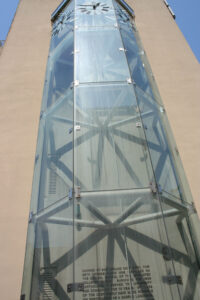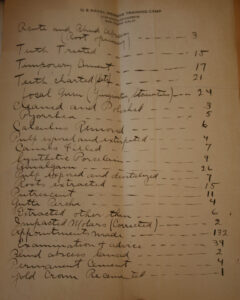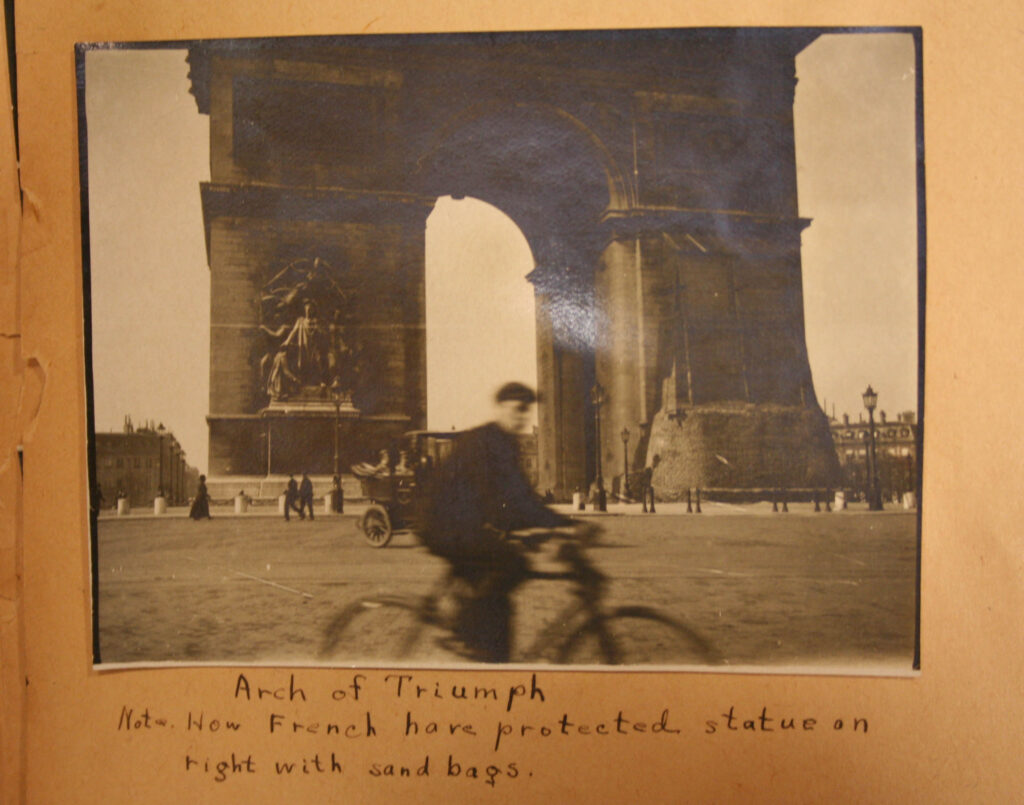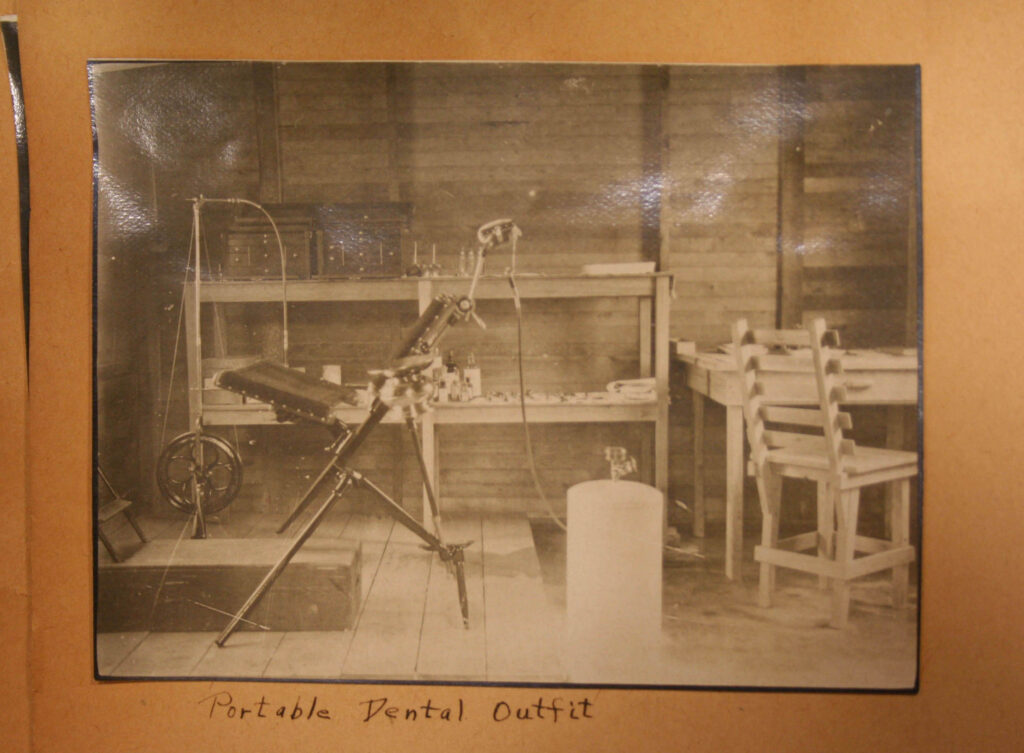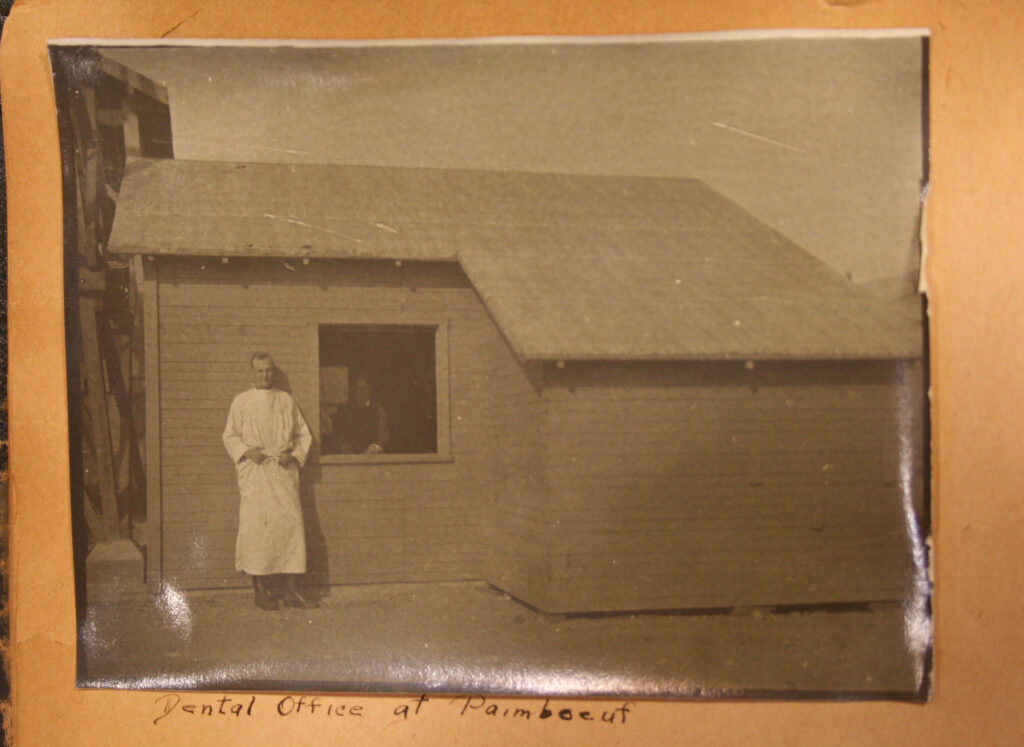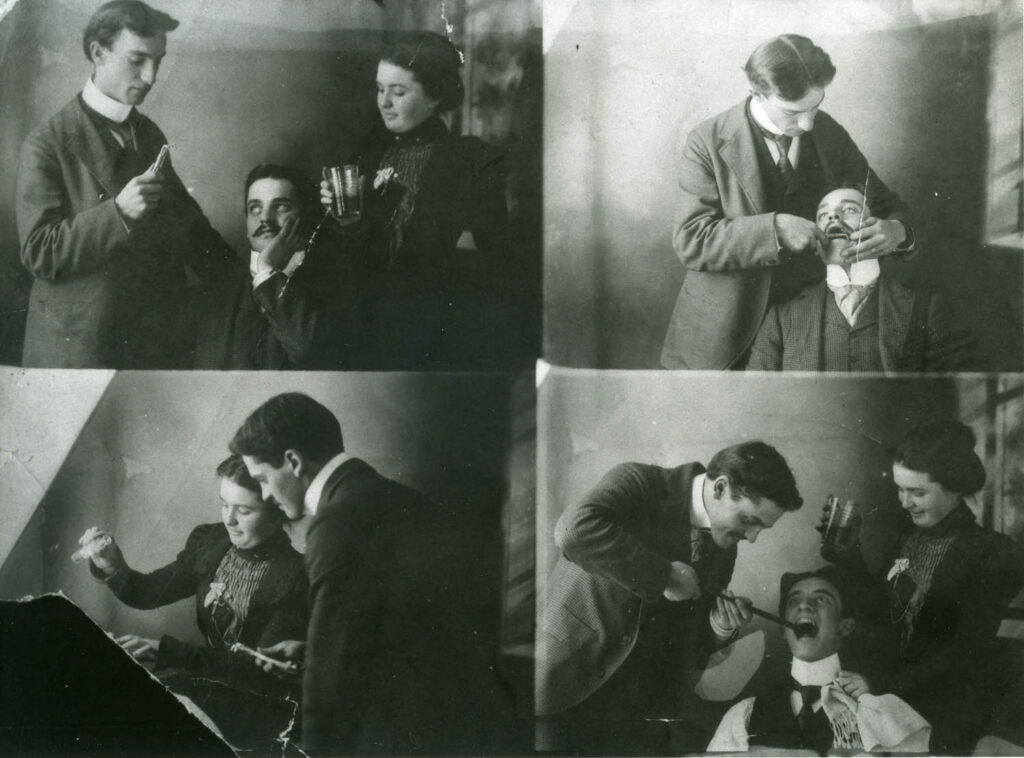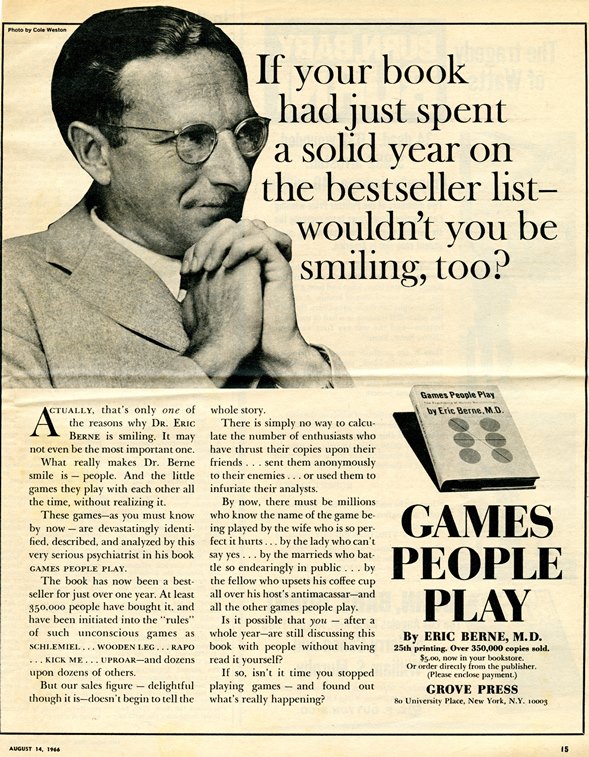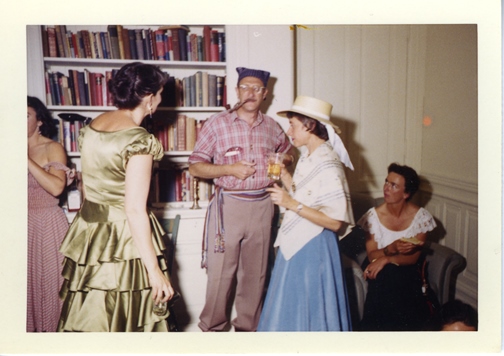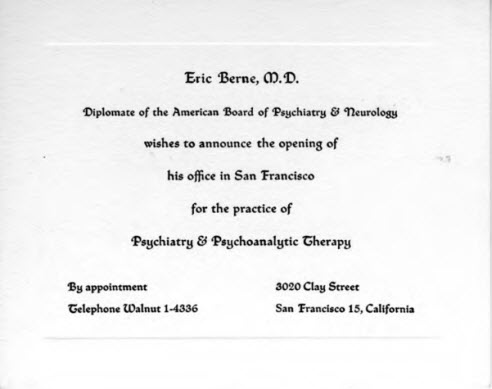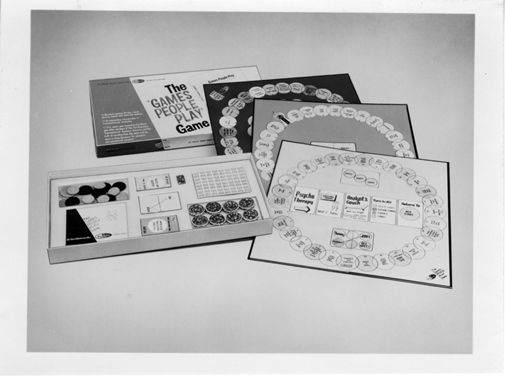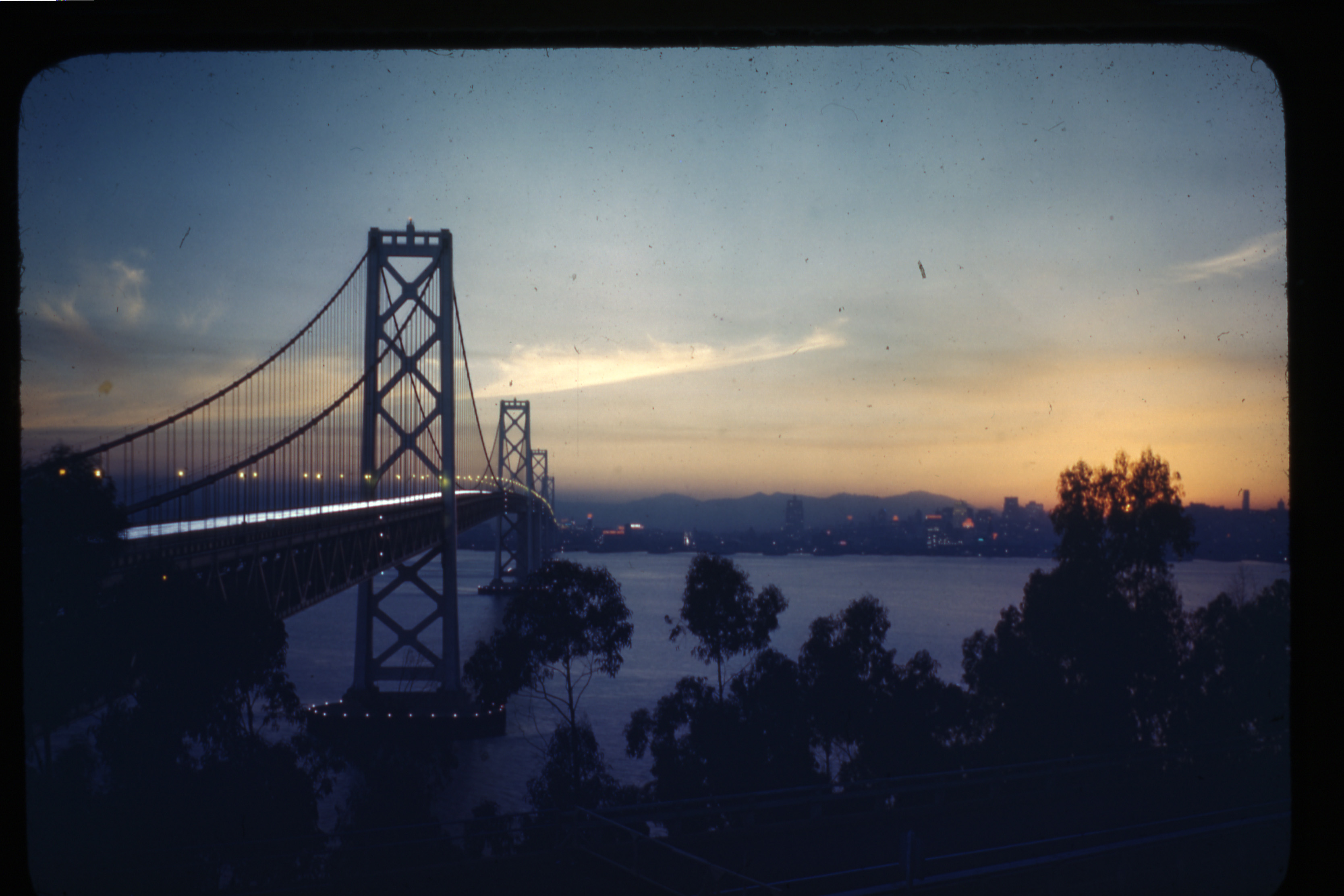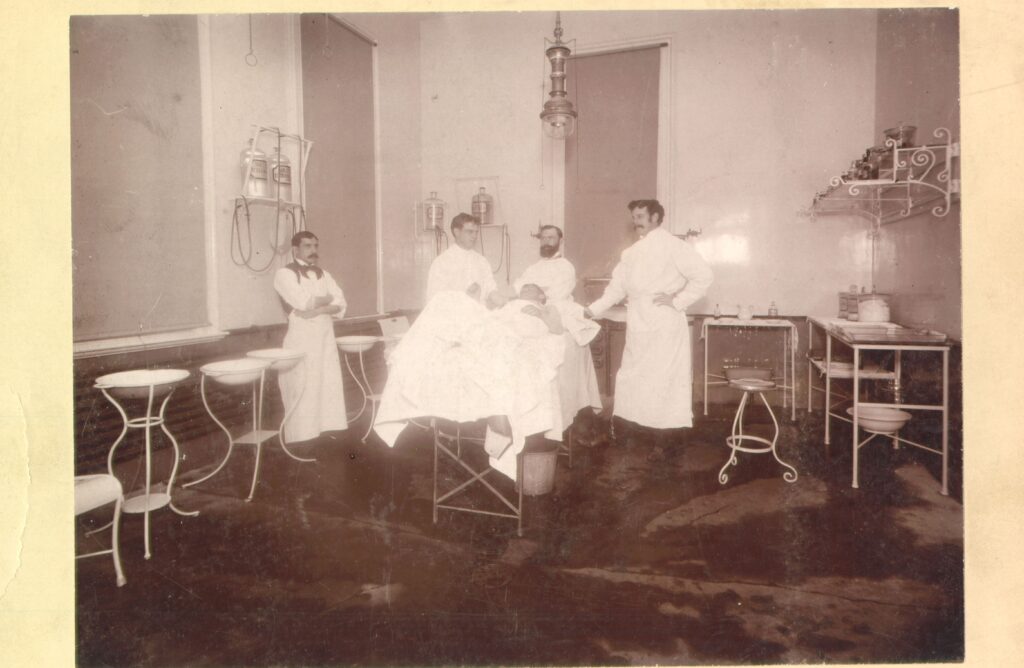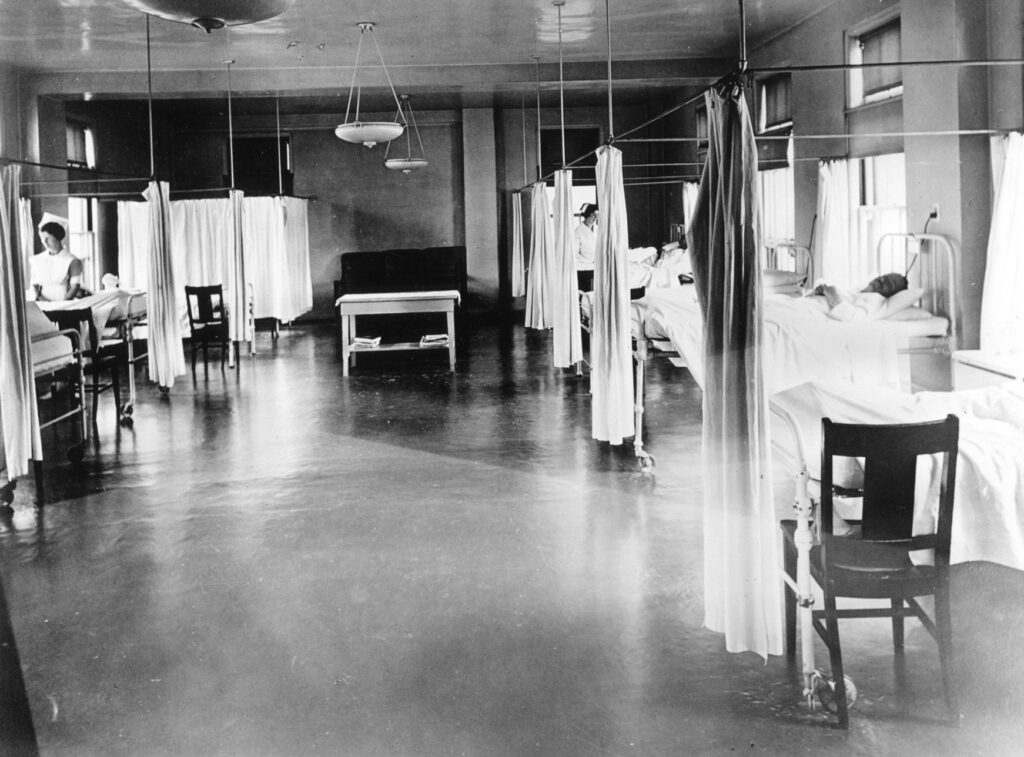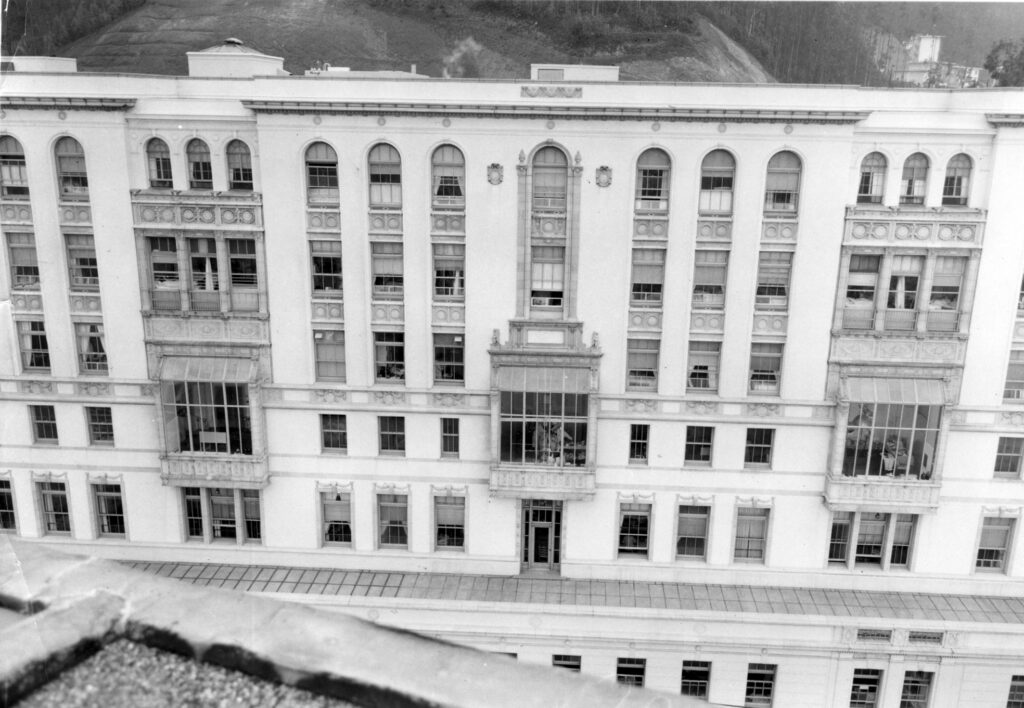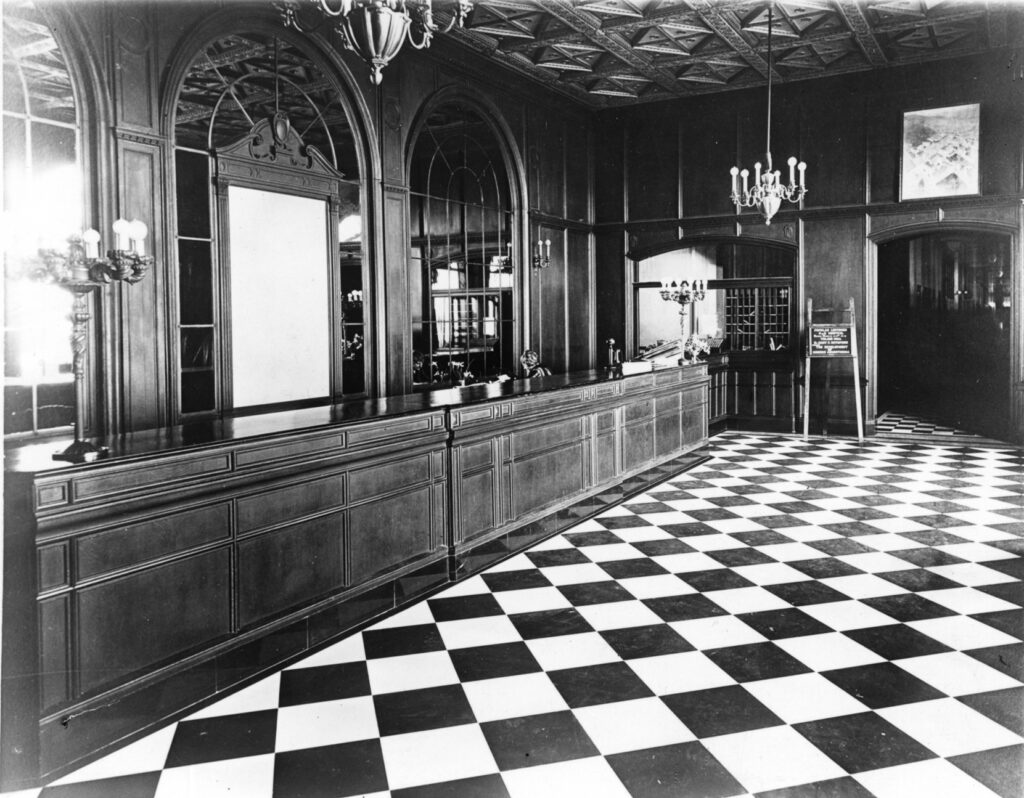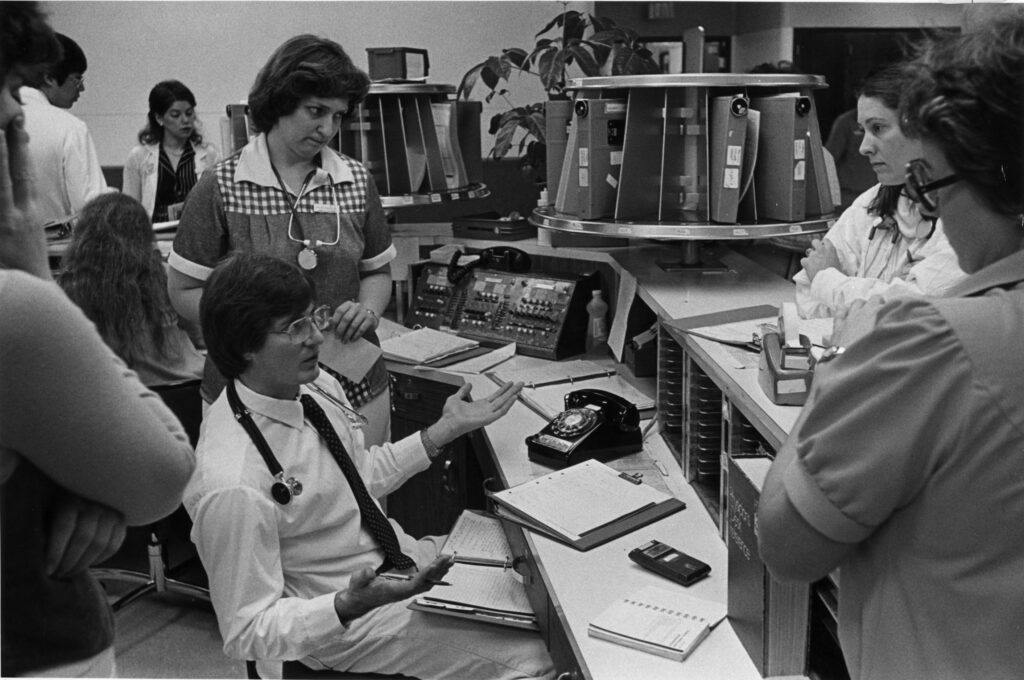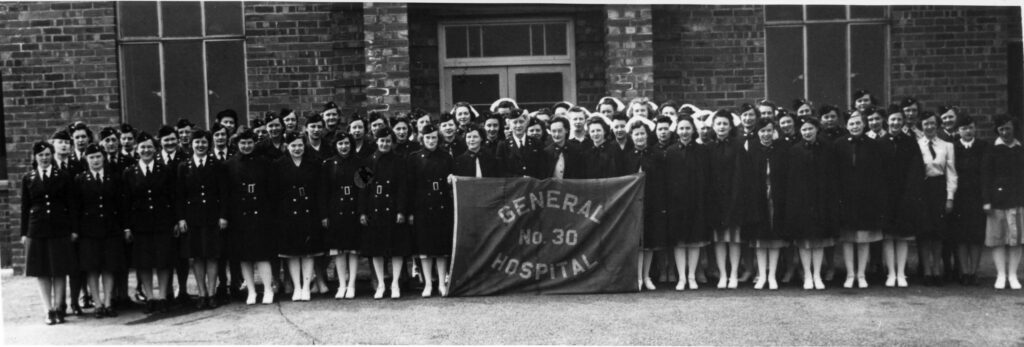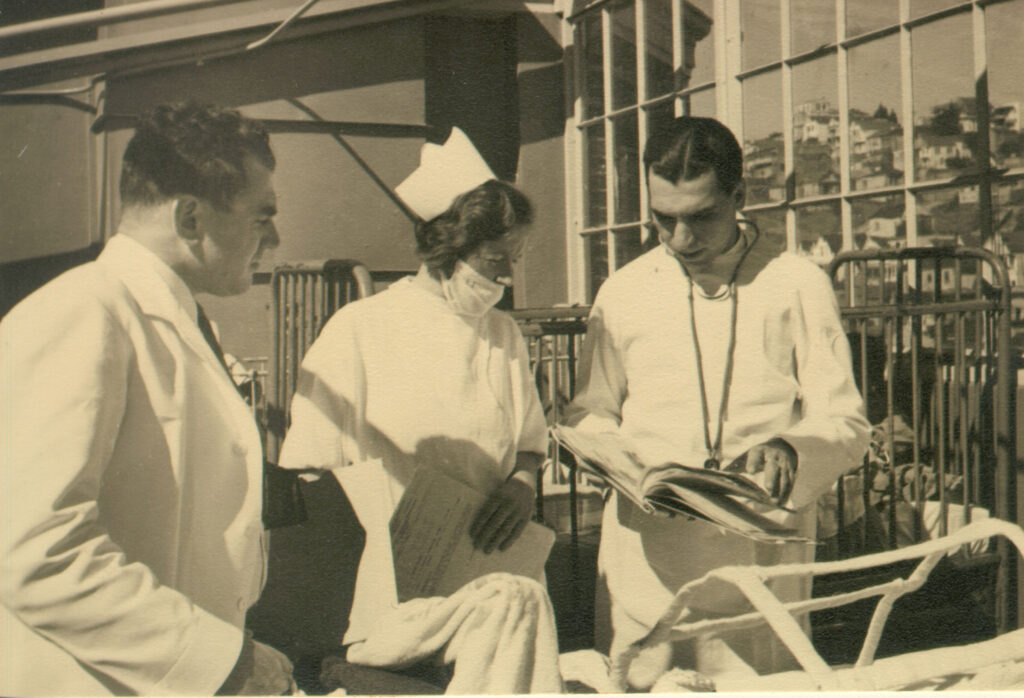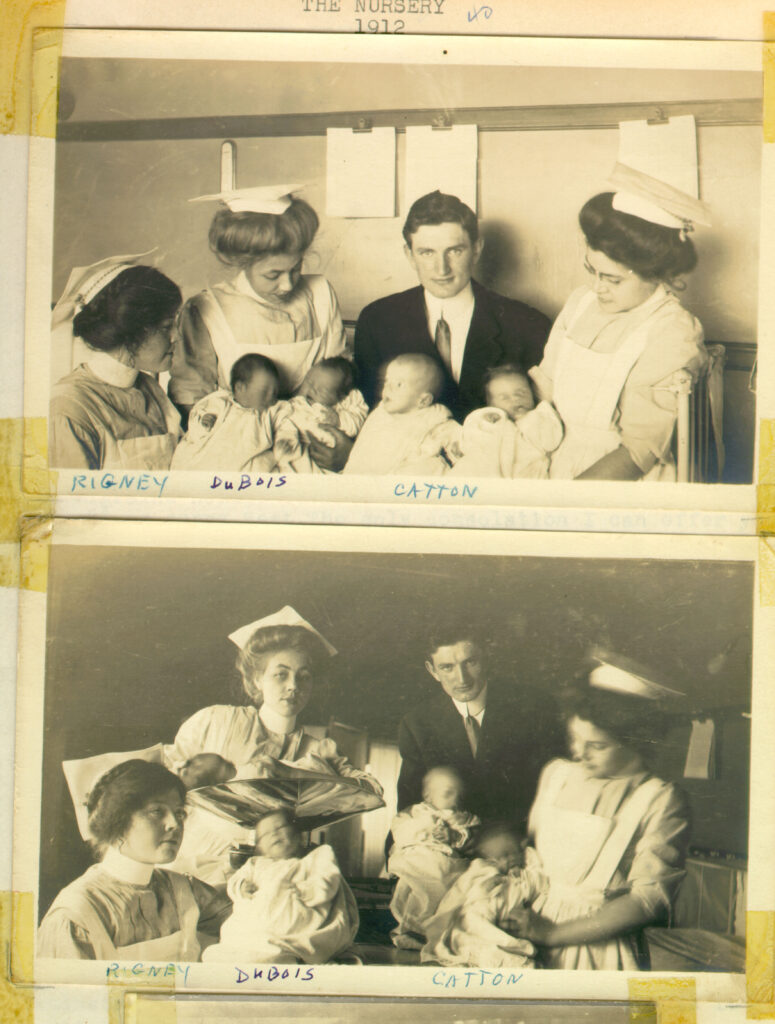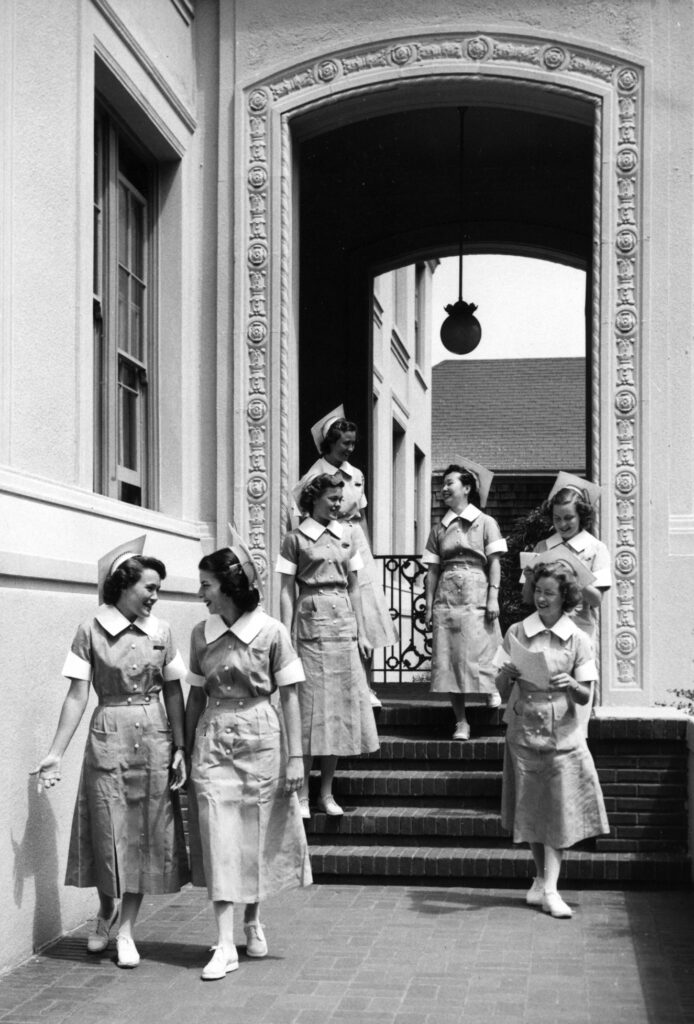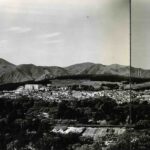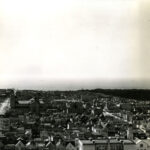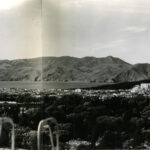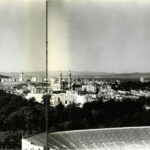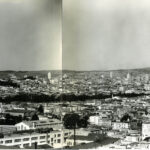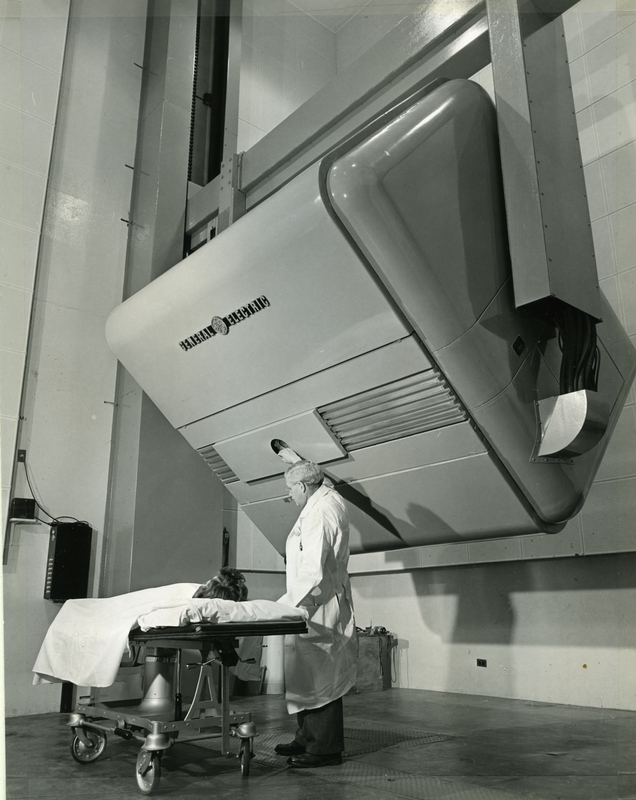Have you ever noticed the large transparent clock on the exterior of Millberry Union? It looks like this:
I walk past it often without giving it a second thought, but the clock tower has quite an interesting history.
Often referred to now as the “Founders’ Clock,” it is also known as the “Toland Clock Tower” and “Seth Thomas Clock.” You may also have seen photographs of the Old Medical School building from time to time, with a large clock atop the center of the building– the same clock as Millberry’s clock.
One of our rotating banner images here on Brought to Light depicts the old Medical Building, including the Seth Thomas Clock, through the lens of well-known photographer Ansel Adams. It’s a slice of this photograph:
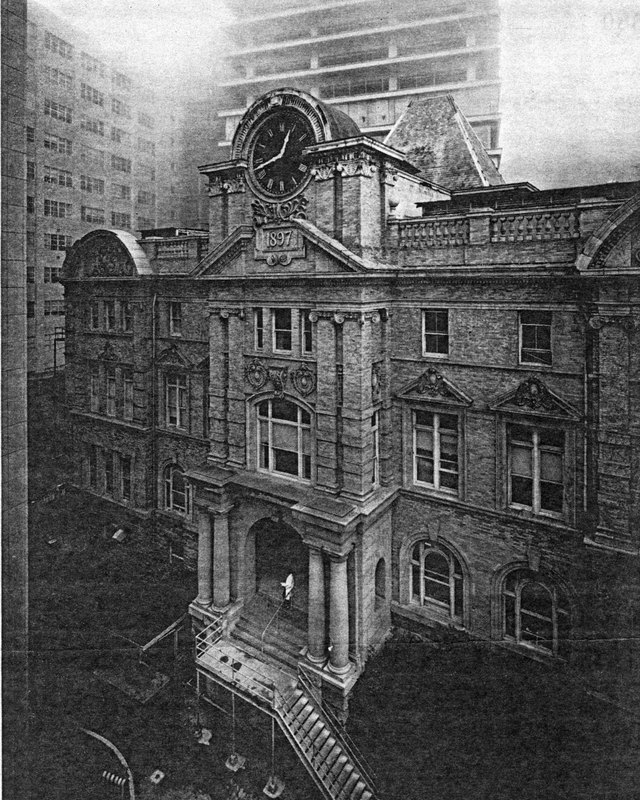
Ansel Adams, Clock Tower of old Affiliated Colleges building, with new structures in fog, August 1964
The above building was the College of Medicine, and the first building to have been erected on the Parnassus campus in 1897. Seth Thomas was a well-known clockmaker in Connecticut in the early and mid 19th century. The clock was brought to San Francisco via ship that traveled around Cape Horn, South America to be a crown jewel in the Affiliated Colleges campus. The image, taken in 1964, shows the old College of Medicine building surrounded by the more modern campus buildings of today in the background and on the left. When the old College of Medicine building was torn down in 1967, a group of “friends of the clock”, led by Alison Saunders, MD and assisted by Meyer Schindler, MD ’38, formed to ensure it’s safekeeping until it could be moved to a new location on campus. “We have salvaged the granite pillars and blocks as well as the clock from the old building that was a landmark on Parnassus Heights . . . ,” Dr. Alison Saunders declared in 1969 as chair of the UCSF Campus Court Development Commission.
The process to find the famous clock a new home took 14 years. Finally, in 1982 the inner-workings of the clock were reinstalled on Millberry Union, 500 Parnassus Ave, where it lives today.
Next time you’re walking around the Parnassus campus, take a closer look at the historic clock. It is a work of art worthy of our attention.
The inscription reads: “Carried by ship around Cape Horn, this Seth Thomas Clock was installed on the Medical School of the Affiliated Colleges in 1897. Surviving the 1906 earthquake, it served the University and community for 70 years. Members of the UCSF family have made possible its restoration as a campus landmark.”
Check out this article that details the historical inspiration for a new clock, “Saunder’s Clock,” in the Mission Hall courtyard of the UCSF Mission Bay campus.

